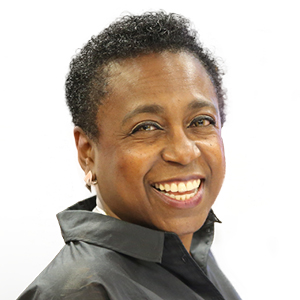An effective Chair and set of non-executive directors will ensure they don’t stray too far into the day-to-day execution of large-scale transformation, as that’s for management to lead on. However, they do need to have a framework in place so there is accountability around delivering on short and longer term, strategic goals.
It’s a fine line for independent directors to walk and something that is made all the more complex by the constant state of flux that many organisations now operate in. At Criticaleye’s Chair and Non-executive Director Retreat, which was held in partnership with
Accenture, attendees put digitisation as the number one driver of transformation, followed by customer-centricity, Net Zero, a shifting geopolitical landscape and cost reduction.
Of course, many of these elements will be interlinked.
Ruth Cairnie, Non-executive Chair of Babcock International Group and a Senior Independent Director of Associated British Foods, commented: “Boards mustn't be paralysed by the fact that there's a lot that they don't know and a lot that's changing. They need to make some clear choices and move. But they also need to be able to pick up signals and course correct, or even change direction if needed, and get comfortable with that.”
A Board needs to be adaptable and agile, but at the same time it needs reliable information and good communication from management. Ruth, who is also a Board Mentor at Criticaleye, continued: “If the objective is to transform how an organisation operates, I think it’s challenging for a Board as it risks moving into the territory of the executives, which can be difficult.
“From my experience, the most important thing is to be open and explicit about what needs to be achieved and who is responsible. So you say, ‘You need to run and execute this,’ but also explain that it’s the most important thing that the company is doing and therefore the Board needs sufficient information to know what’s happening and be able to hold the executives to account.”
Kevin Lane, Managing Director and Europe Lead, CEO-Led Transformation, Accenture, noted that there has to be full agreement at the top level before embarking on significant change. “Transformation is an all-in exercise for a leadership team and an organisation. Everybody has to be behind this and that includes the whole Board. They have to say, ‘We fully support this. We’re behind this and we support the leadership team,’” he explained, going on to add that “changes of this nature are supposed to be difficult – if they feel comfortable, they're probably not transformative”.
He went on to discuss the cultural and psychological aspect of organisational change. “Executing your transformation is essentially a coordinated act of leadership. So, senior leaders need to intentionally role model – that means when they say there is a need for a transformation, including changes in mindsets and behaviours, the first thing they need to do is look in the mirror.”
Yetunde Hofmann, a Non-executive Director at Cranswick Country Foods and another Board Mentor at Criticaleye, built on this observation. “The most important thing is to keep perspective, which I think you can do as a Board director because you have the advantage of not being in an executive role,” she said. “It enables you to provide another point of view, to take a different stance. The other point is that, on a human level, you provide encouragement. We are all human so that support and reassurance are necessary and can make a difference.”
Sometimes, the changes proposed will be far reaching and may involve removing people or completely altering structures and ways of working. According to Yetunde, Boards need to look at transformation through a slightly different, more empathetic lens. “There's got to be a question about the impact of a transformation. Remember, this is about people,” she said.
“It therefore is about demonstrating love – kindness, care and compassion – in the ‘How’ of execution. When looking at the positives and negatives, who is going to be impacted? What consequences do you need to plan for? As a leadership team, have they thought through what the changes mean for people?”
Better Understanding
The fact is that the lines are becoming more blurred in Boardrooms when it comes to executive and non-executive territory.
Marc Engel, Vice Chair, A.P. Moller – Maersk, commented that the creation of sub-committees can help the Board gain better knowledge and understanding of some of the operational issues faced by executives and management.
Without these types of groups, it’s going to be hard for NEDs to have a grip on digital transformation and areas like ESG. He said: “Do you really have enough time in Board meetings to understand some of those issues for an organisation? I know very few CIOs who will tell you that the Board fully understands what they're doing and can provide meaningful input.”
Marc also made the point about non-executives being there to help. He said: “It's the role of the Board, in my opinion, to be supportive of a CEO and management team. It can be a fine line to tread, as you want diverse views and to have debate whereby people disagree with each other, but ultimately you need to build alignment so that the executives feel supported and can be brave.”
If organisations are going to navigate this period, they will have to take risks.
Matthew Blagg, CEO of Criticaleye, said: "A high-performing Board will have different angles and reference points to enable them to see the bigger picture. That’s essential when undertaking large-scale transformation, especially when volatility has become the norm.”
For Matthew, the key point is that everyone in the Boardroom is on the same page and in agreement about what any proposed transformation is trying to achieve and why it will ultimately improve performance. He added: “The executive and non-executive directors also need to stay aligned when things get choppy, as they inevitably will in times like these.”



